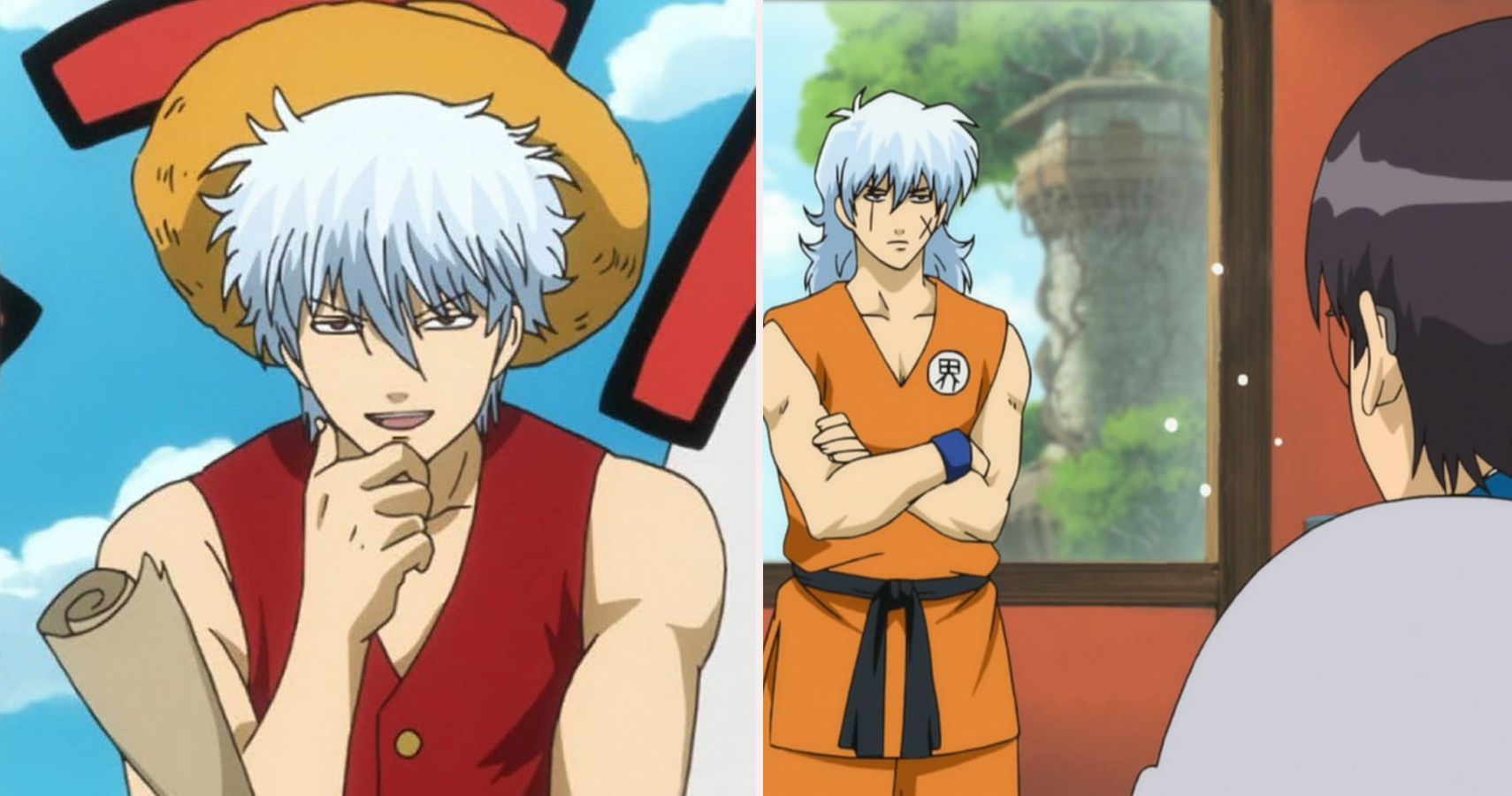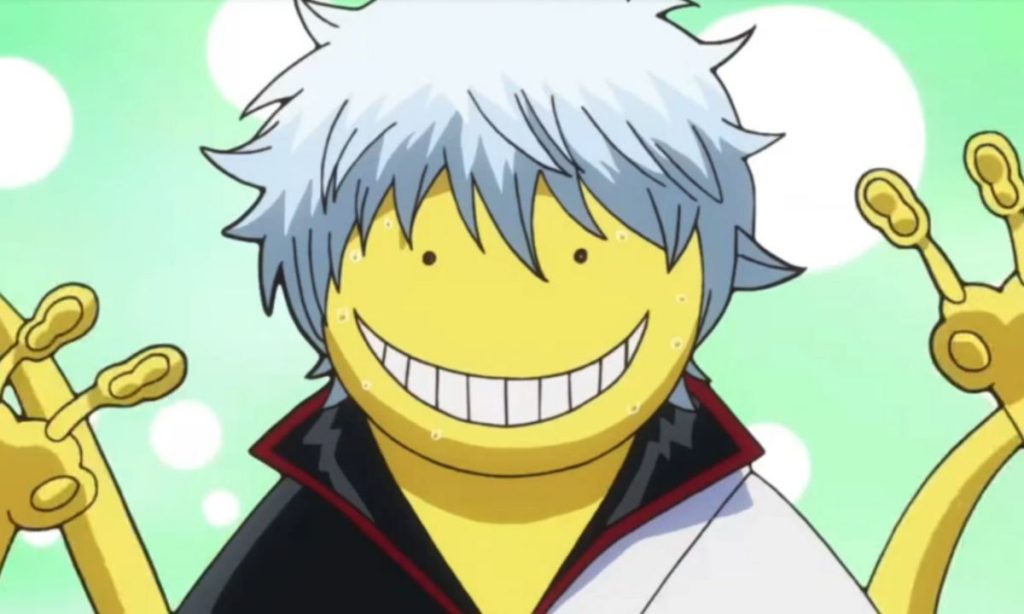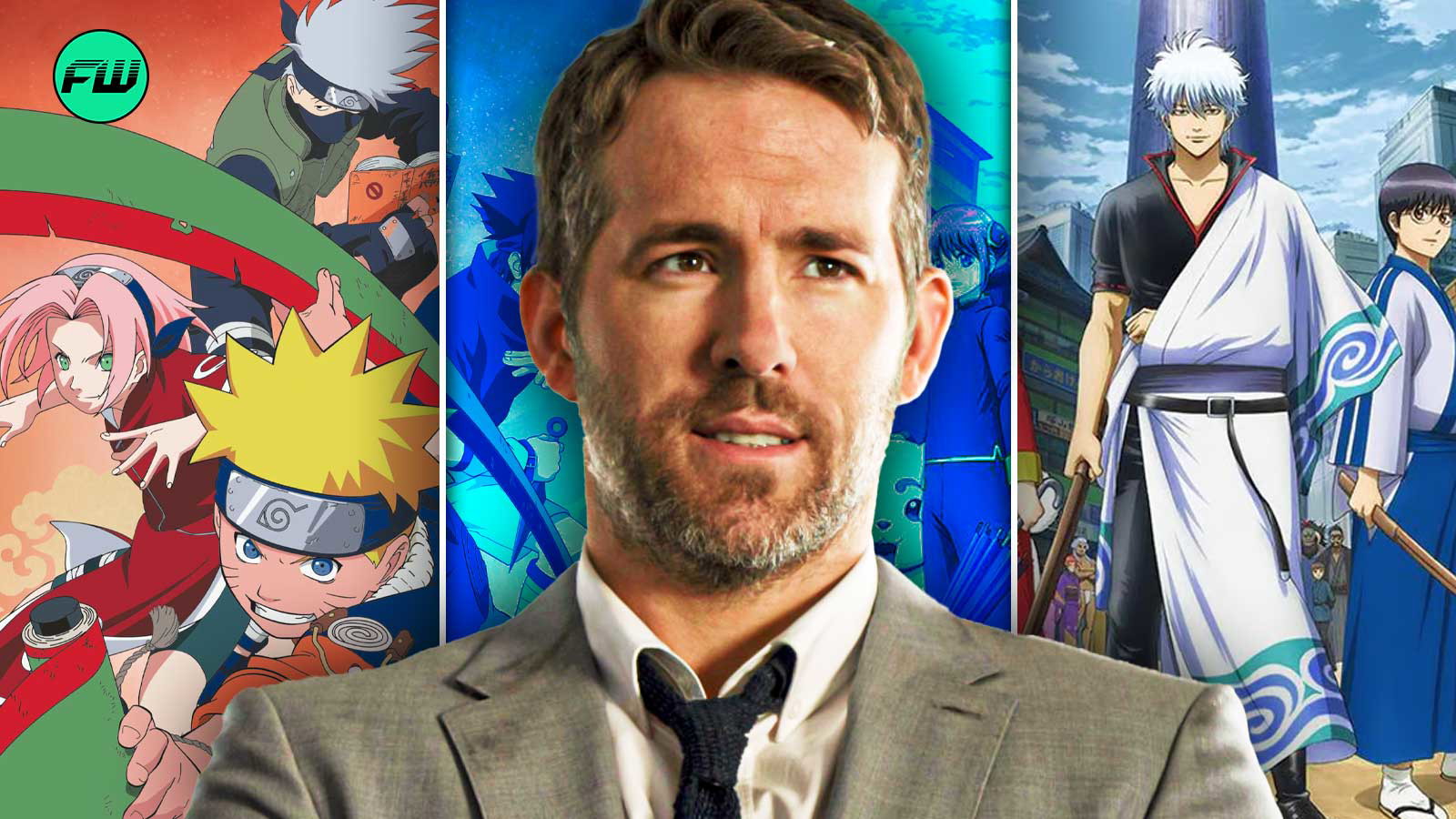Gintama, the brainchild of Hideaki Sorachi, has cemented itself as one of the most iconic and irreverent anime series of all time. Known for its wild humor, unexpected plot twists, and relentless parodying of other popular anime, Gintama operates in a space where few dare to tread. Sorachi’s work on Gintama is a masterclass in how to flirt with the boundaries of copyright law, creating a series that is both a love letter and a satire to the entire anime industry.

One of the most intriguing aspects of Gintama is how Sorachi has managed to parody some of the biggest names in anime history—Dragon Ball, Naruto, One Piece, and many others—without ever seeming to worry about the legal implications. This fearless approach has earned Gintama a unique place in anime culture, where it is both respected and adored by fans and creators alike.
The Art of Parody: Gintama’s Unmatched Homage to Anime Giants
Gintama doesn’t just parody; it reveres and pokes fun in equal measure. Sorachi’s approach to parodying other anime is almost like a conversation between friends—one that is filled with inside jokes, affectionate jabs, and the occasional roasting. For instance, Gintama THE FINAL, marketed as the series’ conclusion (though fans know better), opens with a parody of Dragon Ball.

But Dragon Ball is far from the only target. Bleach, another titan of the anime world, frequently finds itself in Gintama’s crosshairs. Gintoki often dresses as Ichigo Kurosaki, the protagonist of Bleach, complete with the signature oversized sword and Shinigami attire. In one particularly hilarious scene, Gintoki even tries to use Ichigo’s final attack, the Getsuga Tenshou, albeit with comically disastrous results.
One Piece, the beloved tale of pirates and adventure, is another frequent victim of Gintama’s parody machine. Sorachi takes Luffy’s dream of becoming the King of the Pirates and twists it into Gintoki’s absurd quest for financial stability.
In one gag, Gintoki eats the fictional Wave Wave fruit, turning his hair wavy, a clear mockery of Luffy’s iconic Gomu Gomu no Mi powers. The absurdity of these parodies is what makes them so entertaining, and it’s clear that Sorachi has a deep affection for the series he’s satirizing.
The list doesn’t stop there. Gintama’s parody extends to almost every major anime you can think of—Assassination Classroom, where Gintoki finds himself compared to Koro-sensei by a wary Tsukuyo; Kuroko’s Basketball, where Gintama’s characters engage in ridiculous, over-the-top sports antics; and even Baki and Berserk, known for their intense action and dark themes, are not safe from Sorachi’s comedic lens. From Fullmetal Alchemist to Jojo’s Bizarre Adventure, no anime is too sacred to be parodied in Gintama.
Why Gintama Gets Away with It: The Legal Tightrope of Parody and Copyright
Given the sheer volume of parodies in Gintama, one might wonder why Hideaki Sorachi has not faced a barrage of copyright lawsuits. The answer lies in the nuanced understanding of parody, satire, and the protections these forms of expression have under law.
In many jurisdictions, including Japan, parody and satire are considered forms of free speech and are protected under fair use laws. These laws allow creators to reference and satirize other works, provided that the new work offers commentary, criticism, or humor and does not simply replicate the original.
Gintama’s parodies are not direct copies of the original material; they are exaggerated, twisted, and often absurd interpretations that transform the original content into something entirely new. Sorachi’s genius lies in his ability to walk this fine line, creating content that is undeniably derivative yet wholly original in its execution.
Moreover, it’s important to consider the business aspect of Gintama’s existence. The series is published by Shueisha, one of Japan’s largest and most powerful publishing companies, which also owns the rights to many of the anime and manga that Gintama parodies. This corporate connection provides a layer of protection, as it would be counterproductive for Shueisha to sue itself over these parodies.
Additionally, many of the creators whose work is parodied in Gintama are also published by Shueisha, making it likely that they view Gintama’s antics as harmless fun rather than a serious infringement on their intellectual property.
Another factor that might explain Sorachi’s freedom is the understanding and mutual respect among mangaka. It’s possible, and even likely, that Sorachi obtains permission from the authors of the series he parodies. The idea of receiving a notification that Gintama will be poking fun at your work has likely become a running joke within the industry. For creators like Akira Toriyama, Tite Kubo, or Eiichiro Oda, being parodied by Gintama is almost a badge of honor—a sign that their work has made a significant impact on the anime world.
The Cost of Creative Freedom: Gintama’s Shift to the Midnight Slot
Despite the legal protections and the industry’s apparent leniency, Gintama has paid a price for its bold and unfiltered content. Early in its run, the series was shifted to a midnight slot, a move that reflected the more mature and sometimes controversial nature of its humor. This time slot is traditionally reserved for content that might not be suitable for younger audiences, and it allowed Gintama to explore more risqué and graphic jokes without facing censorship.

The shift to midnight also meant that Gintama reached a smaller, more niche audience compared to mainstream anime airing in prime time. However, this did not deter Sorachi. If anything, it gave him more creative freedom to push boundaries and explore new comedic avenues. Gintama’s midnight run became legendary for its no-holds-barred approach to satire, solidifying its reputation as a cult classic.
The reduced viewership in this time slot also insulated Gintama from the potential backlash that might have come from more conservative viewers or parents concerned about their children being exposed to the series’ adult humor. By embracing its status as a late-night show, Gintama was able to carve out a unique space in the anime world, where it could operate without the constraints that might have hampered its creative vision.
The Legacy of Gintama: A Parody for the Ages
Gintama’s legacy is one of unparalleled creativity and fearless satire. Hideaki Sorachi has created a series that not only entertains but also challenges the conventions of anime storytelling. Through its parodies, Gintama has celebrated the medium of anime while also poking fun at its tropes and clichés. It is a series that refuses to take itself too seriously, even as it tackles serious themes and delivers emotional moments that resonate with viewers.
For Ryan Reynolds, a Hollywood actor known for his own brand of meta-humor and fourth-wall-breaking antics, Gintama represents the kind of creative freedom that is rarely seen in the entertainment industry. While Reynolds’ character Deadpool shares some similarities with Gintoki in terms of breaking the fourth wall and delivering satirical humor, Gintama’s sheer audacity in parodying other anime without fear of reprisal is something that Reynolds can only admire from afar.
In the end, Gintama stands as a testament to what can be achieved when a creator is given the freedom to explore their ideas without fear of censorship or legal repercussions. Hideaki Sorachi has not only created a beloved anime series but has also redefined what it means to parody in the modern age. As Gintama continues to be celebrated by fans around the world, its influence on anime and comedy is undeniable, and its legacy will undoubtedly inspire future generations of creators to push the boundaries of their own work.
Gintama’s Fearless Parody and Its Place in Anime History
Gintama’s success in parodying the biggest anime franchises without fear of copyright retribution is a remarkable achievement in the entertainment industry. Hideaki Sorachi’s fearless approach to satire, combined with his deep love for the anime medium, has created a series that is both a tribute and a critique of the genre.

Gintama’s ability to navigate the complex legal landscape of parody and copyright, while maintaining its integrity and humor, is a testament to Sorachi’s genius and the unique position Gintama holds in the anime world.
As the series continues to be revered and referenced, its impact on anime culture remains significant. Gintama is not just an anime; it is a cultural phenomenon that has redefined the boundaries of what can be achieved in the world of parody and satire. For fans, creators, and even those who have been parodied, Gintama represents the ultimate expression of creative freedom and the power of humor in storytelling.
News
🎖️ Chiefs’ Push for Veteran Depth Informed by Past Super Bowl Experience: A Strategic Move for a Three-Peat
As the Kansas City Chiefs gear up for the 2024 NFL season, one aspect of their preparation stands out: the strategic push for veteran depth across key positions. With aspirations of securing a third consecutive Super Bowl title, the Chiefs…
🏈🏆 Is Darrell Doucette Really Better Than Patrick Mahomes? Flag Football Star’s Bold Claim Sparks a Heated Debate Among NFL Fans
In a surprising turn of events that has left the sports world buzzing, Darrell Doucette, the quarterback for the USA Men’s Flag Football team, recently claimed that he is better than Patrick Mahomes, the two-time Super Bowl champion and widely…
⭐ 2024 Kansas City Chiefs Team Preview with Odds, Moves & MVP Contenders
The Kansas City Chiefs are set for another exciting NFL season as they aim for their third consecutive Super Bowl appearance. Coming off a successful 2023 campaign, the Chiefs have made significant offseason moves to strengthen their roster and maintain…
🖖 Browns’ Potential Offensive Line Target Predicted to Join Chiefs: David Bakhtiari’s Future in the NFL
As the 2024 NFL season begins, veteran offensive tackle David Bakhtiari remains a free agent, and his next move is one of the most closely watched stories in the league. Once regarded as the best left tackle in football, Bakhtiari…
❺➎⓹ Ranking the Top 5 Offseason Moves Made by the Kansas City Chiefs
The Kansas City Chiefs had a busy offseason filled with critical decisions regarding contract extensions, free-agent signings, and draft choices. With the regular season just around the corner, it’s time to reflect on the most impactful moves made by the…
🧑🏿🦱“RDJ Should Be Playing This Role Instead of Doom”: Fans Suggest an Alternative Role for Robert Downey Jr. in the MCU
Robert Downey Jr. is set to make a highly anticipated return to the Marvel Cinematic Universe (MCU), but not in the way fans might have expected. The actor, best known for his portrayal of Tony Stark/Iron Man, is confirmed to…
End of content
No more pages to load











